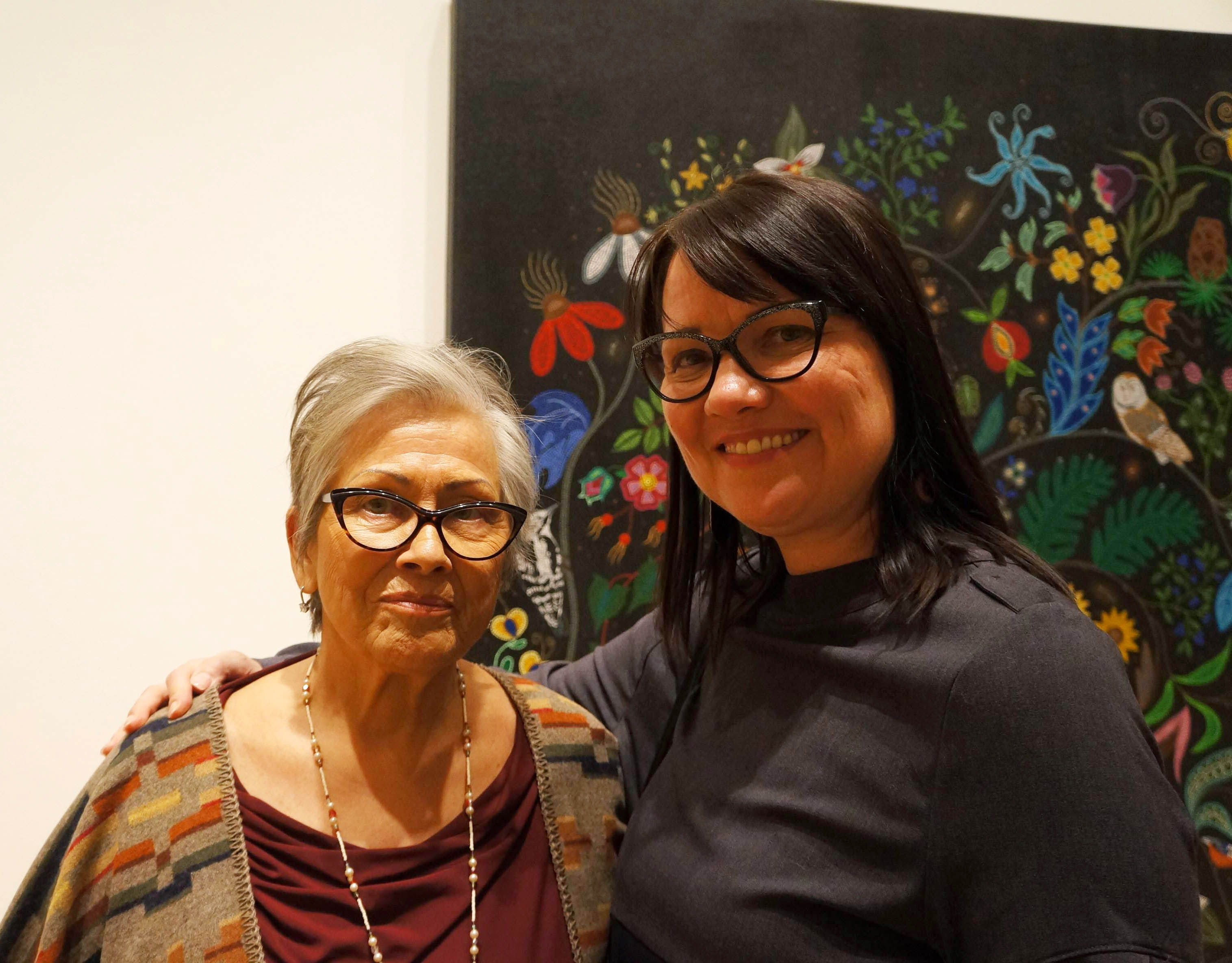The life of one Carleton professor’s mother is featured in one of the Carleton University Art Gallery’s (CUAG) three new winter exhibits, all of which aim to highlight Indigenous art and ideas.
The exhibit My Mom, kahntinetha Horn, the ‘Military Mohawk Princess’
was curated by Carleton Canadian and Indigenous studies professor Kahente Horn-Miller and provides a snapshot into her mother’s life as one of the only Indigenous celebrities in the 1960s.
Horn-Miller gathered photos, letters, and drawings of her mother, kahntinetha Horn, from her years as both a fashion model and activist for Indigenous rights.
“She set the path for those of us who are here now and those children who are yet to be born, and it’s important to share that knowledge and that’s why this is so meaningful,” Horn-Miller said. “That’s why I put it together.”
Horn said she had no idea of her daughter’s intentions and was surprised on the exhibits’ opening night.
“It’s great that I saw some of those letters that I wrote, all the people I met, the hard times I had, the battles I was in. I haven’t thought of them for a long time,” said Horn.
Horn herself graduated from Carleton over 50 years ago, and her daughter now teaches at the school. Horn-Miller’s Indigenous students also attended the event to show their support and meet her mother, connecting the three generations.
“My role now is to be there for our young people,” Horn said. She said she wants to help tell the real stories about Indigenous people—“not the fake stories that are being taught in the schools.”
Carleton Indigenous students said it was both rare and inspiring to see an entire gallery filled with Indigenous artwork.
Sabre Pictou Lee, a Canadian studies master’s student writing her thesis with Horn-Miller, attended the exhibit.
“I haven’t been to an Indigenous exhibit that incorporates more than one Indigenous retrospective and to do that while Kahente’s mother is living is extremely unique and extraordinary,” said Pictou Lee. “I mean, we’re talking about an Indian princess activist from the early 1960s where it was unheard of.”
Courtney Vaughan, a graduate student studying under Horn-Miller, also attended the event to meet Horn herself.
“For a young Indigenous woman, it’s really powerful to see other Indigenous women doing powerful things,” she said.
All three exhibitions focused on Indigenous artwork and provide a glimpse into their values and ways of life, something Horn said has been left out of the mainstream media.
Presented in partnership with the Thunder Bay Art Gallery, Uprising: The Power of Mother Earth is a touring exhibit featuring paintings by Métis visual artist Christi Belcourt. The exhibit Re: Working Together / Re: Travailler focuses on an exploration of collaboration in art.
“The non-native people do not revere the natural world the way we do,” said Horn. “They are destroying nature with all kinds of destruction of water, the air, the land, everything.”
Horn said after her fame, she was blacklisted by the media for 40 years. In 2008, she was badly beaten at the border which resulted in a heart attack and despite being a public figure earlier in her life, she said not one police report was made.
“So, let’s do something. You have to do something and if you don’t, you are part of the problem,” she said.
All three exhibitions of Indigenous art will be on display at CUAG until April 28.
_________________________________________________________________________________________________________________________________
Photo by Hannah Berge






